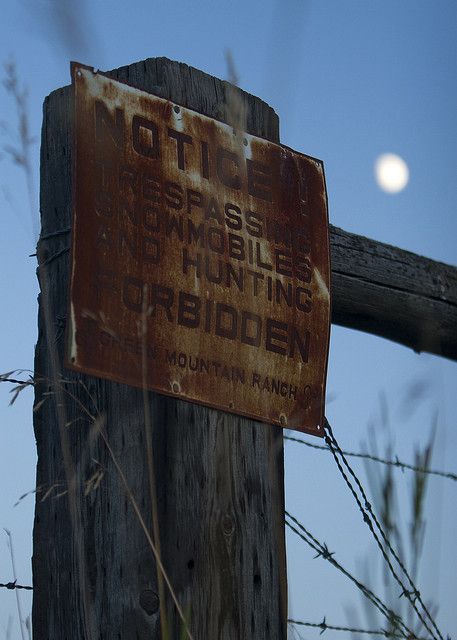Corner Trespass
The term “corner crossing” is a misnomer, traveling across private property to get from one parcel of public land to another at a checker-boarded section corner is trespassing. UPOM has fought tirelessly against legislation aimed at legalizing trespass. Below are the facts about corner trespass, the threats it poses to landowners, and the case law that supports the illegal nature of corner trespassing:
1. Landowners have exclusive control of the airspace above their property.
The controlling U.S. Supreme Court case is US v. Causby (1946), which concerned planes descending to low elevations over private property. The US Supreme Court held that there was a taking of private property by occupying the airspace immediately above the property:
“If the landowner is to have full enjoyment of the land, he must have exclusive control of the immediate reaches of the enveloping atmosphere. Otherwise buildings could not be erected, trees could not be planted, and even fences could not be run” . . . Thus, a landowner “owns at least as much of the space above the ground as he can occupy or use in connection with the land,” and invasions of that airspace “are in the same category as invasions of the surface…However, it seems to be the consensus of the holdings of the courts in this country that the air space, at least near the ground, is almost as inviolable as the soil itself.”
2. There is no assumed easement at checkerboarded corners.
The U.S. Supreme Court took up the issue of checkerboarded corners in Leo Sheep Co. v. United States (1979). This Wyoming case concerned the government asserting that it had an assumed travel easement at checkerboarded corners, which would allow it to build roads the public could use to get from one parcel of land to another. The Court flatly rejected that claim as a violation of Constitutional projections against taking of private property.
“This Court has traditionally recognized the special need for certainty and predictability where land titles are concerned, and we are unwilling to upset settled expectations to accommodate some ill-defined power to construct public thoroughfares without compensation.
3. There is no ‘minimal’ amount of trespass that wouldn’t be considered taking of property
To cross a corner, a member of the public must cross all four corners, including the private ones. That is a trespass—a physical occupation of private property. There is simply no authority for the proposition that the government can impose public access across private land for free just because access seems like a good idea for everyone else. The Montana Supreme Court has ruled that it is irrelevant what economic costs it imposes on the private property owner.
“[H]owever minimal the economic cost it entails,” the right to exclude others from entering and using …. [private] property” has been repeatedly called “the most fundamental of all property interests.” Kafka v. Montana Dept. of Fish, Wildlife & Parks, 2008 MT 460, ¶71, 348 Mont. 80, 201 P.3d 8 (citing Lingle v. Chevron U.S.A. Inc., 544 U.S. 528, 539 (2005)).
